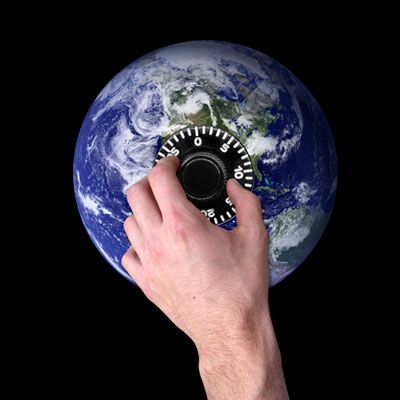Europe: Cracking the Code
Europe is not easy, with 50 independent countries , 740 million people, and 24 official languages. Within Europe, you have the European Union of 28 countries, including 18 who use the Euro currency. The supermarket business includes a few multi-country players such as Carrefour,Tesco, Rewe and Auchan. However, each country tends to have its own dominant retailers with unique operating practices and distributor communities. Europe appears to be bouncing back, with strong GDP growth in Germany, United Kingdom, Nordics and improved conditions elsewhere. Europe appears attractive for USA exporters due to the size of the prize and appreciation for innovation.. American lifestyle and products are enjoyed by many. Export Solutions provides Ten Tips on cracking the code to develop new business in Europe.
1. What is your USP ?
Europe shares many eating habits with the USA, creating a difficult environment to compete with higher priced, “me too” products. Success stories typically involve categories such as Peanut Butter, Microwave Popcorn, or Tex Mex that are viewed as “uniquely American”.
2. Labeling & GMO
Most European countries require labels with nutritional information in the native language. A frequent approach is to create a “Euro Pack”, with multiple languages crammed on the back of the package. There are only a few countries that accept the “stickered” approach. Most European retailers do not accept products with GMO ingredients. This is a hotly debated issue that we will not solve here. Bottom line is to offer non GMO versions or don’t waste your effort in the strict countries.
3. Define your Ambition
Are you looking to become a player in your category, prepared to invest in marketing support and trade activities ? Or are you just looking for incremental shipments based upon an “America’s favorite” platform ? Either option is acceptable, but you should align expectations and choice of partner with your investment model.
4. First Stop UK, then Nordics
Made in the USA brands should consider the UK and Ireland as their initial point of entry. Common ( or is it similar ?) language, familiarity with USA brands, and organized trade structures enhance your chances of success. American retailers such as Walmart (Asda), Costco, and Whole Foods may be charmed to add your product to their UK shelves. Nordic countries are worth consideration.. Many food brands are imported into the region from other European countries, so the price gap for American brands is not as great. An educated consumer base with strong spending power add to the attractiveness. Cost of entry is modest, at least compared to Germany or France.
5. Distributor Model- Best in Class
The European distributor model provides an integrated solution of key account sales, country level marketing, logistics, and financial services. These exclusive partners service all country retailers and actually serve as your primary “bill to” customer in country. The USA broker model is not common in Europe, as most brands require financial and logistics services, not just “selling”.
6. Database: 3,000 Distributors- 34 European Countries
Export Solutions database covers 3,000 European distributors across 34 European countries. This provides an average of 88 distributors per country of various specialties: Gourmet Food, Confectionery, Beverage, Natural Food, HBC, and other supermarket categories. We also cover “Americana” distributors handling primarily Made in the USA products.
7. Participate in ESMA
ESMA is the European Sales and Marketing Association. This is an organization of 90 of the top distributors across Europe. These best in class distributors are serious companies, with a history of brand building for companies with unique products and a willingness to invest. ESMA features an annual conference (Vilnius-June), that provides a venue for manufacturer members to network with leading distributors across Europe. For more information, visit www.esma.org, and tell David O’Neill, ESMA CEO, that Greg sent you !
8.Trade Shows – ANUGA,ISM, and CIBUS
Participation in European industry trade shows is a must. These shows attract from 50,000 to 150,000 visitors including most European buyers and distributors. In 2022,Sial in Paris will be the best show for most brands. ISM is Europe’s version of the USA’s Sweets and Snacks show. Biofach is important for natural foods and PLMA for private label. Each country also features an exhibition such as CIBUS in Italy, IFE for the UK, and Alimentaria for Spain. The USA features a pavilion at each of these shows. Rent a booth and test reaction and interest for your product line.
9. Americana Strategy
Each European country has retailers and distributors that specialize in America’s favorites. Dedicated stores like Taste of America in Spain or Gray’s in Sweden offer a broad assortment of USA brands to fans of American lifestyle and homesick expatriates. Other leading supermarket chains offer dedicated sections of American products. This approach is about availability and visibility not pricing and slotting allowances. An Americana strategy may appear as a low cost way to test market acceptance of your product.
10. Cracking the Code- Look in the Mirror
USA exporters considering Europe should think about what it takes to get on the shelf at Kroger or Stop and Shop: innovative product, slotting fee’s, promotion plan, competitive pricing, and a strong broker. The fundamentals for entering Europe are not that much different, other than you are the “new guy”, with the added expense of freight from the USA. Start slowly, with realistic expectations of starting in a handful of European countries versus selling across Europe. American products are well received, but Europe is not the destination for those just looking to sell a few extra cases.


